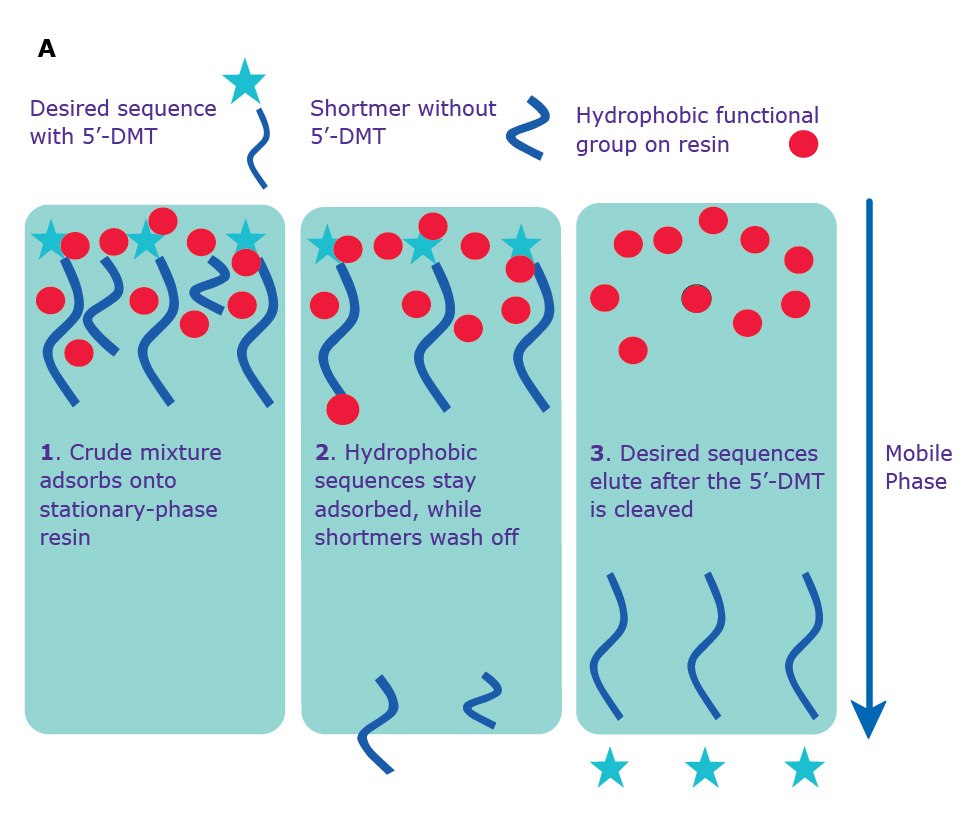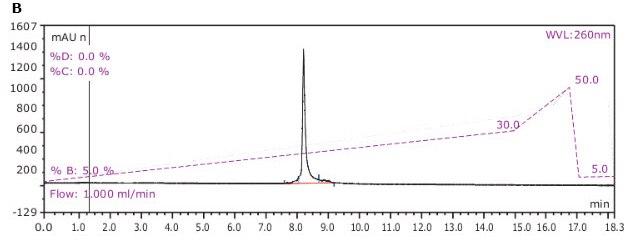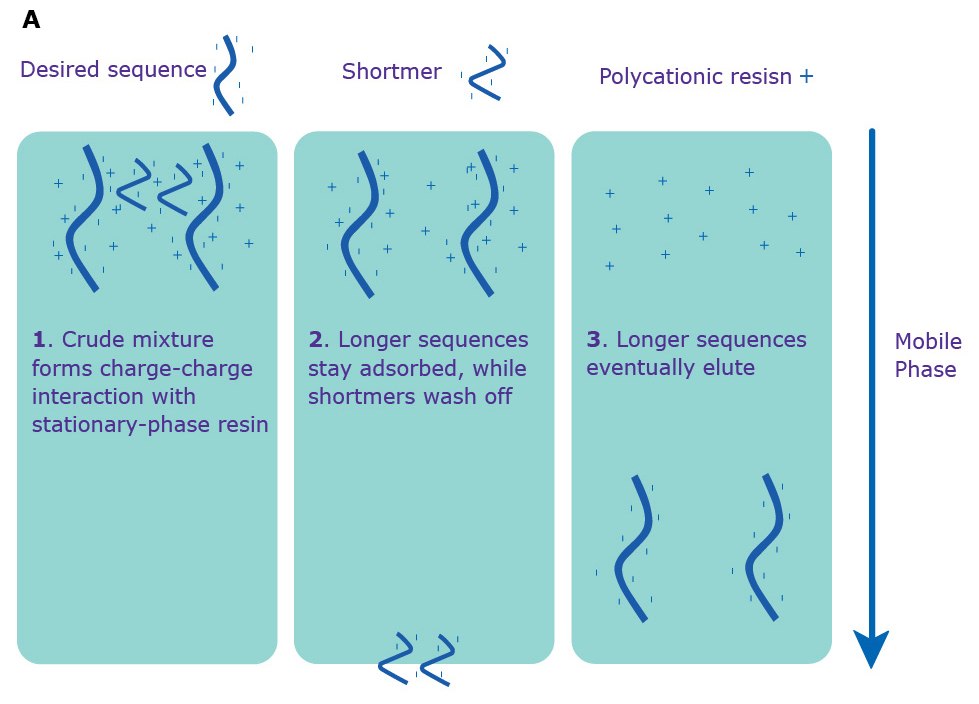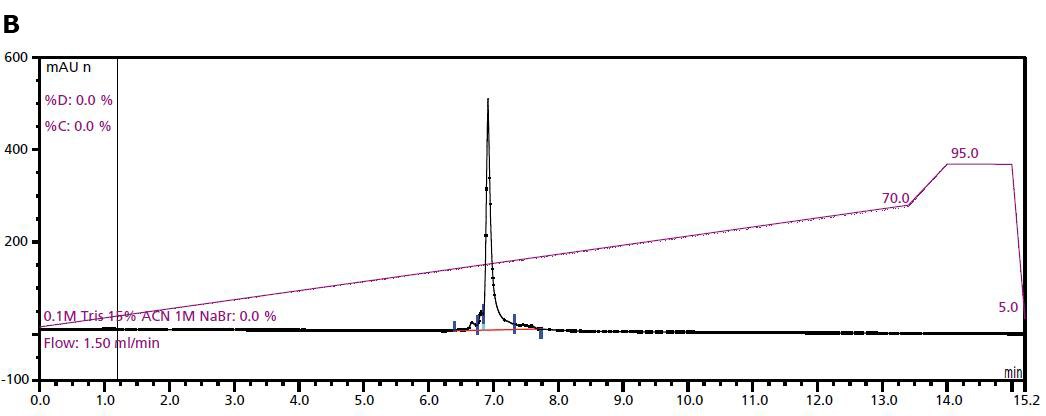Oligonucleotide Quality Control by Analytical HPLC
RP-HPLC (reverse-phase high-performance liquid chromatography), IE-HPLC (ion-exchange high-performance liquid chromatography) and UPLC (ultra performance liquid chromatography) provide quantitative assessments of oligonucleotide purity. These assessments are available upon request for an additional fee.
RP-HPLC
RP-HPLC is based on the difference in hydrophobicity between the full-length sequence (has hydrophobic trityl group) and shortmers (do not have trityl groups). While the full-length sequence is retained on the column, the shortmers are washed off
(Figure 1). The resolution is excellent for the analysis of up to 50 bases, though in some cases, it can be stretched to 80 bases. RP-HPLC is a powerful technique for separating a wide range of molecules.


Figure 1. A. Separation via RP-HPLC B. An example reverse-phase chromatogram.
IE-HPLC
IE-HPLC is based on the number of charged groups (phosphate) in the oligonucleotide backbone. The anion-exchange method involves the use of a salt-gradient mobile phase on a quaternary ammonium stationary phase (Figure 2). The resolution is excellent for the analysis of up to 40 bases. The primary reason for using IE-HPLC as opposed to RP-HPLC is to analyze oligonucleotides with significant secondary structure, typically found in sequences with high GC content. IE-HPLC is effective for such oligonucleotides because the mobile phase has a highly-alkaline pH, which disrupts hydrogen bonding, and therefore, secondary structure.


Figure 2. A. Separation via IE-HPLC B. An example anion-exchange chromatogram.
UPLC
Advances in particle chemistry performance, detectors and systems have transformed standard HPLC into ultra performance instruments. UPLC allows for the efficient separation of analytes; in this case, short and long oligonucleotides at single-base resolution. Efficiencies of the instrument allow for shorter separation times, thus reducing the overall analysis time.
Conclusion
For an additional fee, we have several analytical chromatography techniques available to assess the purity of oligonucleotides. If additional help is needed, please consult our technical services group at oligotechserv@sial.com.
如要继续阅读,请登录或创建帐户。
暂无帐户?